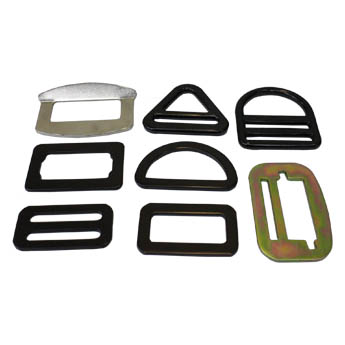沖壓加工
 沖壓加工是一種高效、快速、經濟的金屬加工方式
沖壓加工是一種高效、快速、經濟的金屬加工方式
冠豪工業社
電話:886-4-7696528 傳真:886-4-7685402
50441彰化縣秀水鄉曾厝村福陵巷75號
沖壓加工是一種將金屬片材置於沖壓模具中,通過壓力和力量使金屬發生塑性變形以達到所需形狀和尺寸的加工過程。它可以將金屬片材快速、高效地加工成各種形狀和大小的產品,並且能夠實現大規模生產,被廣泛應用於汽車、家電、建築等多個領域。
沖壓加工通常包括以下幾個步驟:
模具製作:沖壓加工需要使用沖壓模具,因此首先需要進行模具製作。模具需要根據所需產品的形狀、大小、數量等因素進行設計和製作。
材料選擇:沖壓加工的材料通常是金屬片材,如鋁、鋼、銅等。材料的選擇需要根據產品的用途、環境條件、力學性能等因素進行考慮。
材料剪裁:根據模具的形狀和尺寸,將金屬片材進行剪裁,使其符合模具的要求。
沖壓加工:將金屬片材放入沖壓模具中,通過壓力和力量使其發生塑性變形,達到所需的形狀和尺寸。
填充:填充是為了增加金屬的密度和硬度,通過在產品的空隙中注入膠水或其他填充物來實現。
表面處理:根據產品的用途和需求進行表面處理,如噴漆、電鍍等。
檢驗:檢驗是確保產品質量的重要步驟,需要對產品進行尺寸、外觀、硬度等方面的檢測。
冠豪工業社是一家專業的沖壓加工廠家,擁有豐富的沖壓加工經驗和專業技術。該公司擁有先進的生產設備和技術,能夠為客戶提供各種形狀和尺寸的沖壓產品,如汽車零配件、五金配件、家具五金配件、電子產品配件等。該公司的沖壓加工產品質量穩定、精度高、交貨期短,得到了廣大客戶的信任和好評。
總之,沖壓加工是一種高效、快速、經濟的金屬加工方式,被廣泛應用於各個領域。在沖壓加工過程中,模具的設計和製造、材料的選擇、加工工藝的控制以及產品的檢驗等都是非常重要的。冠豪工業社作為一家專業的沖壓加工廠家,擁有豐富的經驗和專業技術,能夠為客戶提供高品質、高效率的產品和服務。
沖壓加工是製造業中一個關鍵的製程技術,它在生產各種金屬零件和產品方面發揮著關鍵作用。本文將深入探討沖壓加工的概念、應用、過程、優勢和挑戰,以及未來的發展趨勢。通過這份2000字的文章,我們希望能夠為讀者提供對沖壓加工技術的更深入了解,並認識到它對現代製造業的重要性。
第一部分:沖壓加工的概念
沖壓加工是一種將平板金屬材料或卷材通過一對模具進行加工的製程。這種製程通常使用在生產金屬零件、零件組件和產品的過程中,包括汽車、家電、電子產品、建築材料等各種行業。沖壓加工通常分為單工序沖壓和多工序沖壓兩大類型,具體的選擇取決於所需的零件和產品的複雜性和材料。
單工序沖壓是一個簡單的沖壓過程,通常用於製造簡單的金屬零件,例如洗衣機門鎖或金屬蓋子。多工序沖壓則包括多個連續的工序,每個工序都使用不同的模具,最終將金屬材料轉化為較複雜的零件或產品,例如汽車車身或家用電器外殼。無論是單工序還是多工序沖壓,這項技術都具有相當高的精度和效率。
第二部分:沖壓加工的應用
沖壓加工廣泛應用於各種行業,以下是一些主要的應用領域:
汽車工業:沖壓加工在汽車製造中佔據重要地位。它用於製造汽車車身、內飾零件、底盤組件和引擎部件等。這些零件需要高精度和耐用性,因此沖壓加工是一個理想的選擇。
家電產業:許多家用電器,如洗衣機、冰箱、微波爐等,都包含著沖壓加工的零件。這些產品需要外觀優美且功能完善,沖壓技術可以實現這一目標。
電子產業:手機、平板電腦、筆記型電腦等電子產品中的金屬外殼通常是通過沖壓加工製造的。這種技術可以確保外殼具有足夠的強度和輕量性。
建築業:在建築業中,沖壓加工用於製造金屬門窗、屋頂材料和其他建築組件。這些零件需要具有一定的耐候性和美觀性。
第三部分:沖壓加工的過程
沖壓加工過程包括以下幾個主要步驟:
材料準備:首先,選擇合適的金屬材料,通常是鋼鐵、鋁合金或銅。然後,將材料切割成適當的尺寸,以便後續的加工。
模具設計:根據所需的零件或產品設計模具,模具的設計將直接影響到最終產品的質量和形狀。模具通常由硬質合金或工具鋼製成。
沖壓過程:在沖壓機上安裝模具,然後將金屬材料置於模具之間。通過機械力或液壓力,模具將金屬材料加工成所需形狀。這個過程可能包括單次或多次的沖壓步驟,以實現所需的形狀和尺寸。
檢測和質量控制:製成的零件需要進行檢測,以確保符合規格和質量標準。這通常包括尺寸測量、外觀檢查和材料強度測試。
加工後處理:根據需要,完成的零件可能需要進一步的加工,如鍍鋅、噴漆或鍍鎳,以提供附加的保護和外觀。
第四部分:沖壓加工的優勢和挑戰
沖壓加工具有許多優勢,但也存在一些挑戰:
優勢:
高精度:沖壓加工能夠實現高精度的製造,確保產品滿足嚴格的規格要求。
生產效率:這種技術可以實現高速生產,大大提高了生產效率。
一致性:沖壓加工能夠產生一致的零件,減少了人為錯誤的可能性。
多材料適用性:它適用於多種金屬材料,並且可以處理不同厚度的材料。
挑戰:
初始成本高:設計和製造模具的成本可能很高,特別是對於小批量生產來說。
複雜模具設計:某些複雜形狀的零件需要複雜的模具設計,增加了製程的複雜性。
材料浪費:沖壓加工可能會產生材料浪費,特別是在製造初期或調試階段。
限制形狀:模具的限制可能會限制某些零件形狀的製造。
第五部分:沖壓加工的未來發展趨勢
沖壓加工作為一個關鍵的製造技術,將在未來繼續發展和演進。以下是一些未來發展趨勢:
數字化製造:數字化技術,如3D打印和數控機床,將與沖壓加工相結合,實現更靈活的生產和更快的產品上市。
材料創新:新型金屬材料和複合材料的研究和開發將擴大沖壓加工的應用範圍,並提高產品性能。
智能製造:應用人工智能和機器學習技術,提高製程的自動化和監控,以提高生產效率和質量控制。
環保和可持續性:製造業將越來越注重環保和可持續性,沖壓加工將不斷尋求更環保的生產方法和材料選擇。
